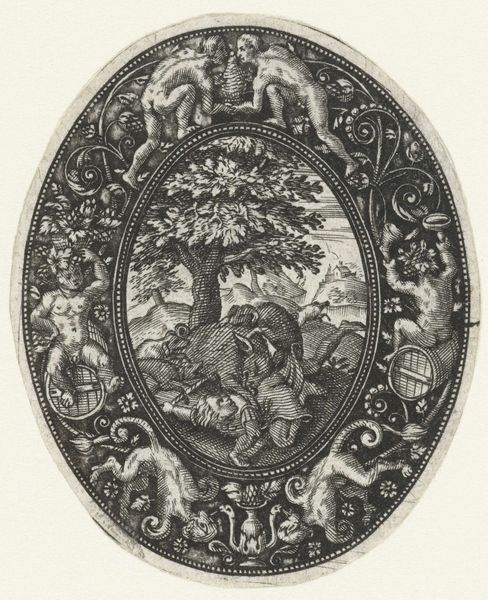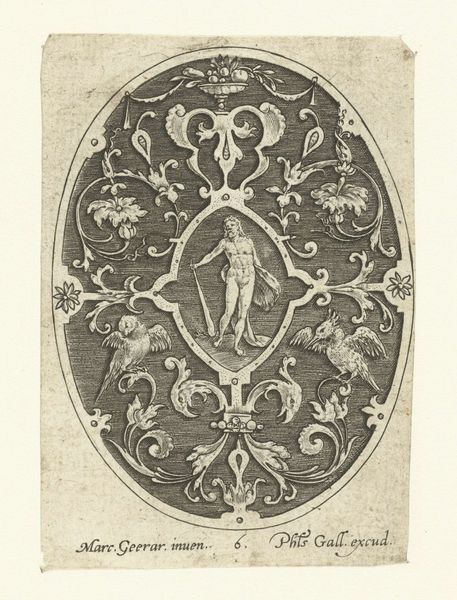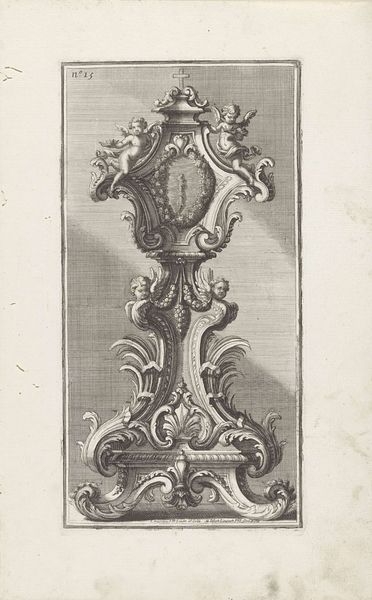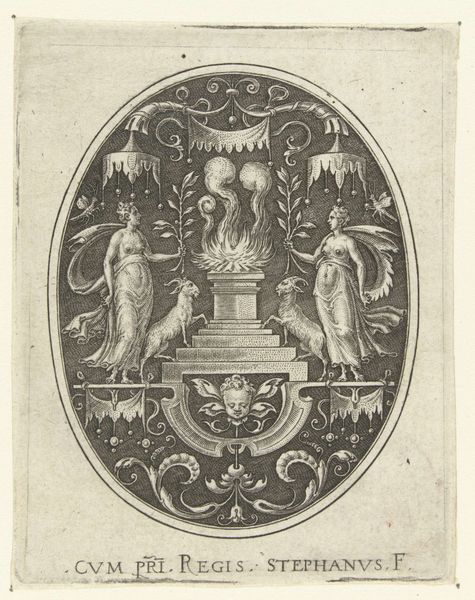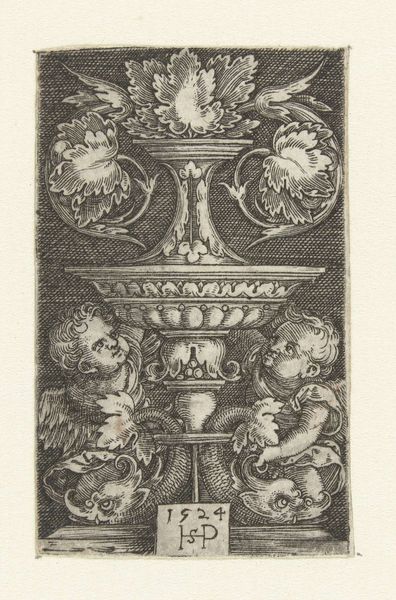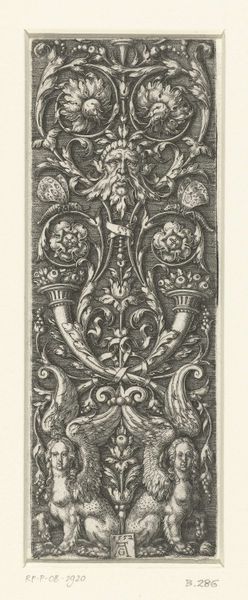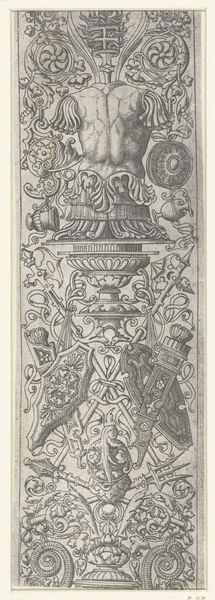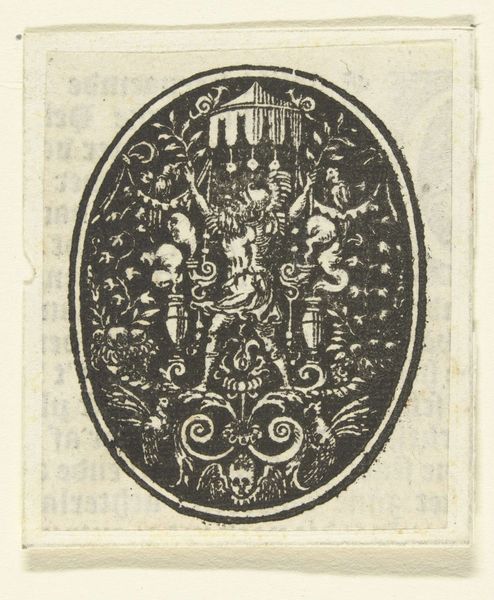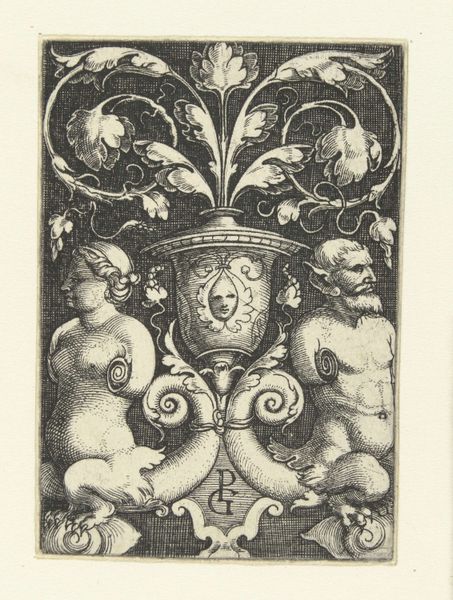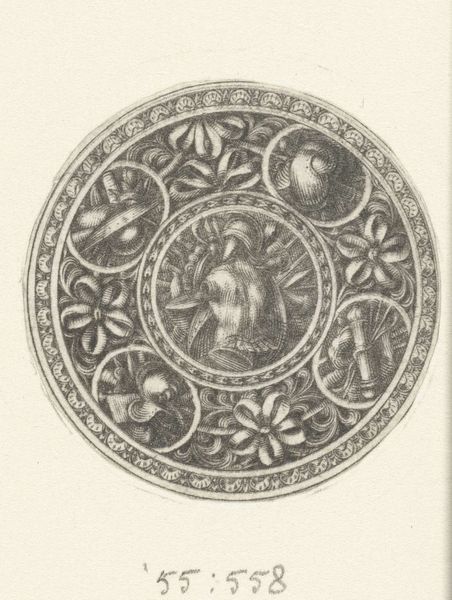
engraving
#
old engraving style
#
figuration
#
form
#
11_renaissance
#
line
#
northern-renaissance
#
engraving
Dimensions: height 57 mm, width 44 mm
Copyright: Rijks Museum: Open Domain
Curator: This is an engraving dating from between 1500 and 1600, attributed to an anonymous artist. It's titled "Ovaal met bladranken ter weerszijden van een vaas," which translates to "Oval with foliage on either side of a vase." Editor: It strikes me as both delicate and surprisingly powerful for a small engraving. The figure seems almost precariously perched, but the density of the surrounding foliage gives it a real sense of place and depth. Curator: The placement is certainly intriguing. Note how the artist situates a classically draped figure atop an ornate vase or fountain, amidst dense foliage. We can analyze this through the lens of gender and power. The elevated position of the figure, traditionally associated with male dominance, is interesting in that the body is relatively androgynous. Are we seeing a challenge to established power structures here? Editor: I am fascinated by the symbolic relationship between the figure, the vase, and the stylized plant life. Vases are age-old symbols of containing and nurturing, deeply linked to feminine principles. Juxtapose that with the upward thrust of the floral design, a natural representation of aspiration. The leaves themselves, rendered in meticulous detail, speak of cycles of growth, death, and rebirth. I wonder, does this juxtaposition seek a sort of spiritual balance? Curator: I think that’s an interesting consideration of how we read these visual elements. We have to contextualize this imagery within the Northern Renaissance. The emphasis on intricate detail was typical, wasn’t it? Perhaps there's a wider social commentary about the artificiality of courtly life reflected in that highly stylized depiction of nature. The anonymous attribution could signal something about its origins in a printmaking workshop rather than singular artistic vision. Editor: That anonymous status allows viewers from later centuries to assign their own interpretations too. And to find beauty in those intricate lines, to see both elegance and wildness intertwined, feels rather enduring. Curator: Indeed. Looking at it through both historical and contemporary perspectives lets us uncover rich layers of meaning, questioning our preconceptions of Renaissance art, and maybe, of our world too. Editor: A dance of symbols that continues to resonate across time. A tiny artwork inviting big questions.
Comments
No comments
Be the first to comment and join the conversation on the ultimate creative platform.
